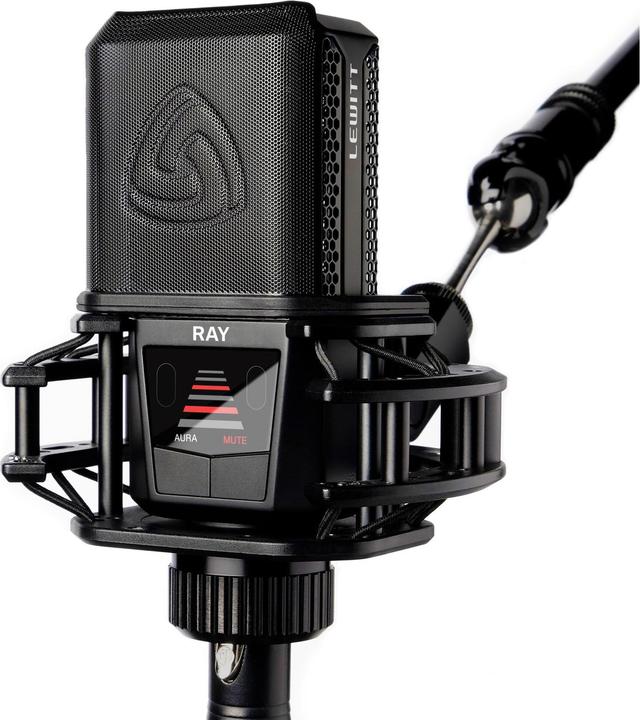

Lewitt Ray: This microphone controls itself
Microphones have worked in the same way for decades. The Austrian manufacturer Lewitt wants to shake up the market with a condenser microphone that regulates the volume itself. It works surprisingly well, with one pitfall.
The biggest challenge when it comes to employees with microphones is always sitting in front of them. When the president almost swallows the microphone at the AGM of the tennis club because he is holding it so close to his mouth, it rattles so hard that nobody can understand him. It is also incomprehensible when the headmistress holds her microphone at the level of her belly button at the parents' evening. These are sensitive devices, the quality is only right at the perfect distance.
Even in professional broadcasting, the ideal distance isn't always the right one, as I know from many years of radio experience. In the euphoria of presenting, the fist-width ideal distance that was drummed into me was quickly forgotten. Incomprehensible mumbling or rattling laughter then spread across the station, usually followed by a visit to the boss's individual office.
No battery, no USB connection
I wish the "Lewitt Ray" had been around back then. The condenser microphone uses a laser to measure the distance between the microphone and the sound source and adjusts the volume accordingly. The function can be switched on or the signal muted using two buttons on the microphone.
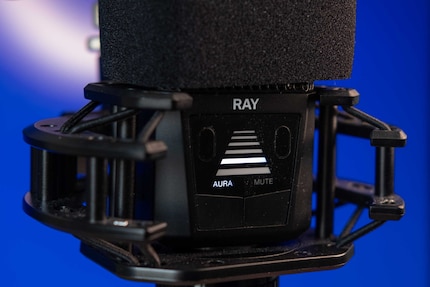
Source: Simon Balissat
The only drawback is that the microphone only has an XLR connection. Neither a battery nor a USB power supply is required to use the distance technology called "Aura". A sound card or mixing console with phantom power is sufficient. Condenser microphones require phantom power anyway, so I would have factored that into my purchase decision either way.
Condenser microphone with all the pros and cons
The "Ray" delivers a clear and well-defined sound in the treble without distance measurement activated. Just as I would expect from a condenser microphone. It picks up the slightest noise from the PC ventilation and the click of my keys. This makes the microphone less useful for applications such as video calls or streaming. But that's clearly because that's what condenser microphones are supposed to do - reproduce everything in detail. They feel right at home in a soundproof audio studio. In a comparatively noisy home office, the microphone is quickly overwhelmed without the "Aura" switched on.
If I switch on the distance detection, the microphone automatically levels down by around 6 dB. If I speak directly into the microphone, I achieve a level of around -12 dB in the Audition recording. When speaking normally in front of the microphone without the "aura", it is twice as many dB. If I move away from the microphone, the "aura" keeps the level constant at -12 dB.
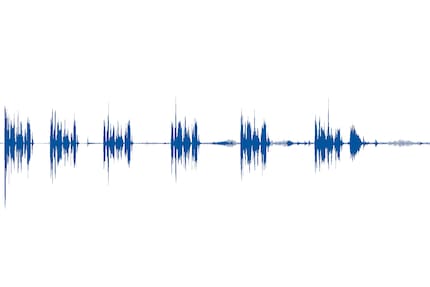
Source: Simon Balissat
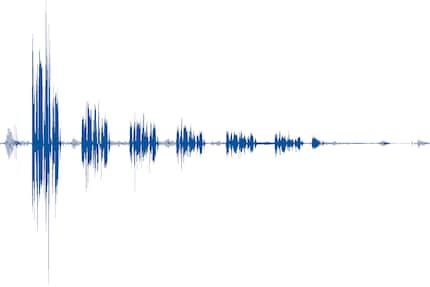
Source: Simon Balissat
The further away I get, the more "space" the microphone picks up during the recording. I still sound just as loud on the recording, but sound reflections are more audible. So the Aura can't focus my voice at a distance because that's not physically possible. This is all abstract talk anyway. You'd better hear for yourself what I mean.
In the first part, you can hear how my voice always sounds the same volume, but also how more ambient sound is picked up. You can also clearly recognise the squeaking of my office chair (which urgently needs to be lubricated). In the second part, my voice is initially much louder and then gradually becomes quieter.
The sound engineer in the microphone
I am surprised at how precisely the microphone levels my voice. The sensor works perfectly in everyday life. Very rarely do the distance LEDs on the "Ray" show me the wrong distance. Really impressive. On the other hand, it is a little awkward that the level is quite low. The input level of my sound card is not quite high enough for an ideal input volume, even when fully turned up. In my case, this is not such a problem as I have a microphone preamplifier anyway. In everyday use, this is something to bear in mind. If the "Aura" function is switched off, the power is perfectly adequate. Then I do well with the good old fist-width distance rule.
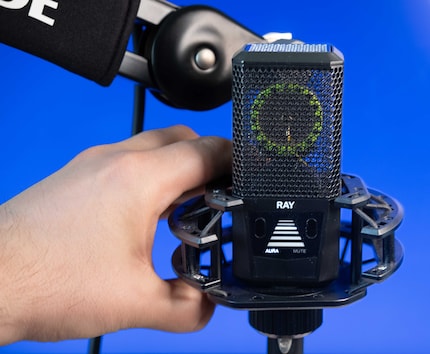
Source: Simon Balissat
I can even programme a distance at which the microphone automatically mutes. What sounds like a gimmick has proved very useful in my everyday life. If the parcel carrier rings the doorbell, for example, I get up in the middle of the call and accept the parcel without the whole call realising that I've ordered far too expensive champagne again. A function I didn't realise I would need.
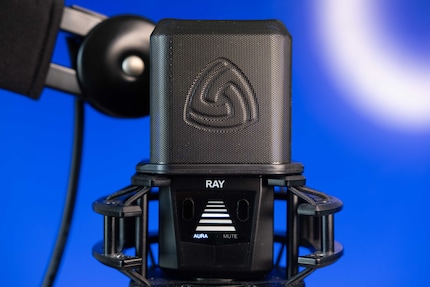
Source: Simon Balissat
The microphone cannot be programmed any further. The levels are as they are and cannot be changed. There is nothing more than an XLR connection. It is literally "plug and play", plug in and go. Unfortunately a rarity these days. I love it.
The scope of delivery includes a bracket with spider, a pop guard that can be elegantly attached magnetically and a windscreen. There is even a leather cover for transport.
According to the manufacturer, the "Lewitt Ray" costs 349 francs or euros and is available from specialist retailers from today. We are working on adding it to our range in the next few weeks.
UPDATE 19.2.2025: We now also have the Lewitt Ray on sale.
In a nutshell
A real game changer in the studio environment
A microphone that levels itself has always been my dream for radio. Connected to the right hardware in a studio environment, the "Lewitt Ray" flexes its muscles. As the recording volume is significantly lower when the "Ray" function is switched on, I need to be able to compensate for this with a mixing console or preamplifier. If I can't do that, I have to live with the low signal. Therefore, it's just not enough for the full five stars.
The functions and extras included are extremely well thought out. I need automatic mute at a certain distance, as well as the small pop protection, which can be installed magnetically and barely visible in front of the microphone. I wish that dynamic microphones would also be equipped with this technology soon. Then I would also understand the president of the tennis club or the headmistress.
Pro
- A solid condenser microphone even without additional features
- Distance function "Aura" works
- Mute by distance is really useful
- Lots of accessories with windscreen, pop screen and spider
Contra
- The level drops sharply when the "Aura" function is switched on
- Sensor sometimes does not recognise exactly how far away you are sitting

When I flew the family nest over 15 years ago, I suddenly had to cook for myself. But it wasn’t long until this necessity became a virtue. Today, rattling those pots and pans is a fundamental part of my life. I’m a true foodie and devour everything from junk food to star-awarded cuisine. Literally. I eat way too fast.


